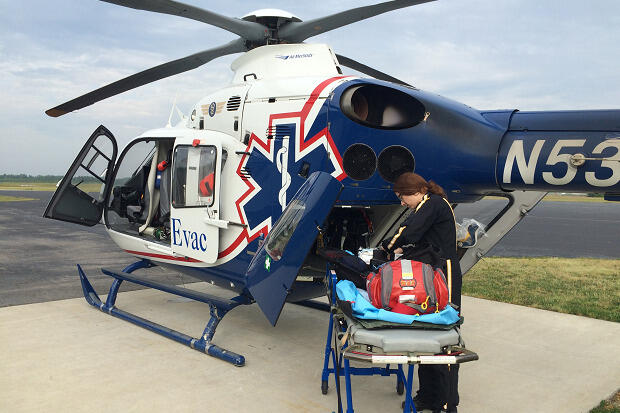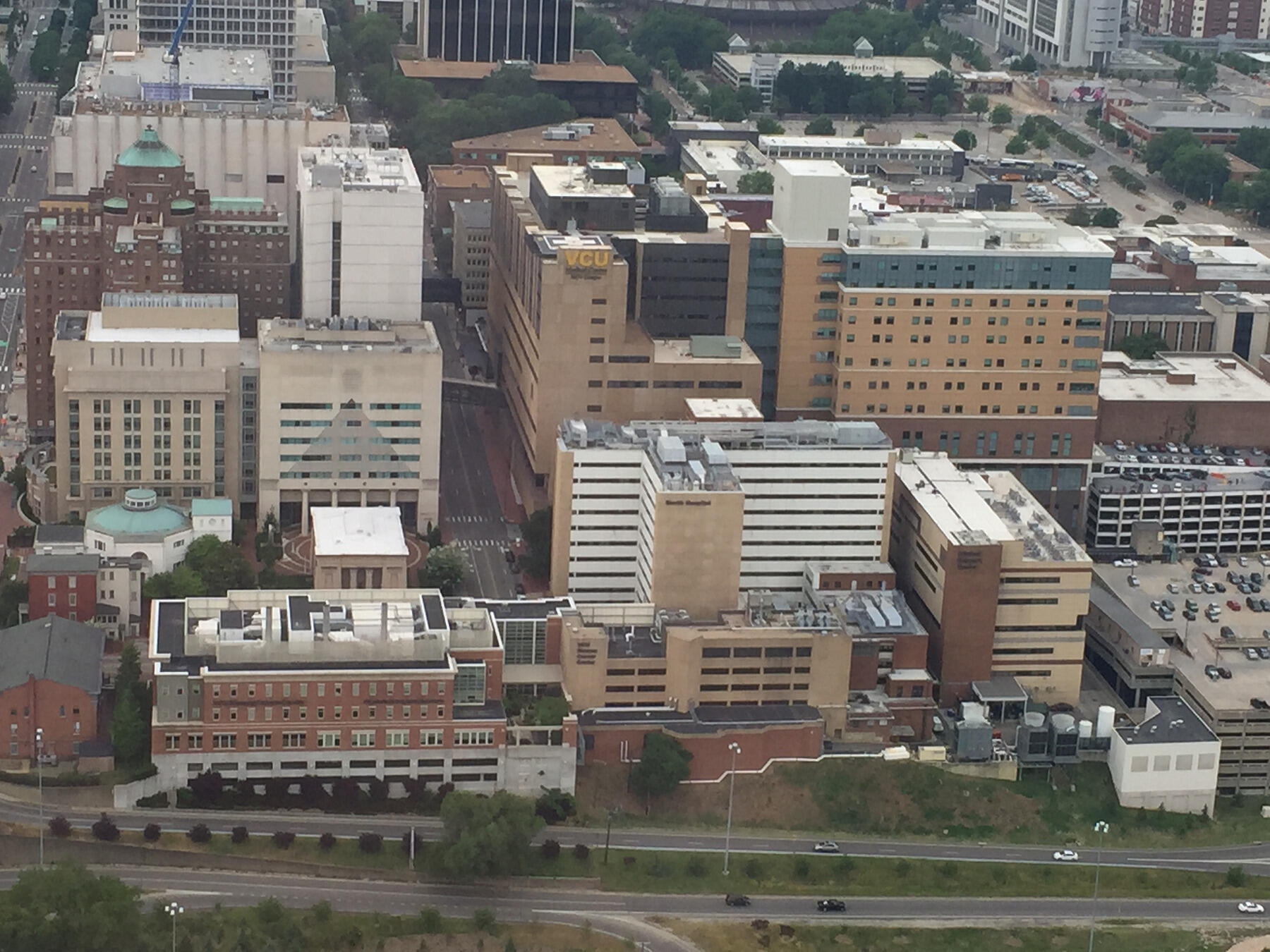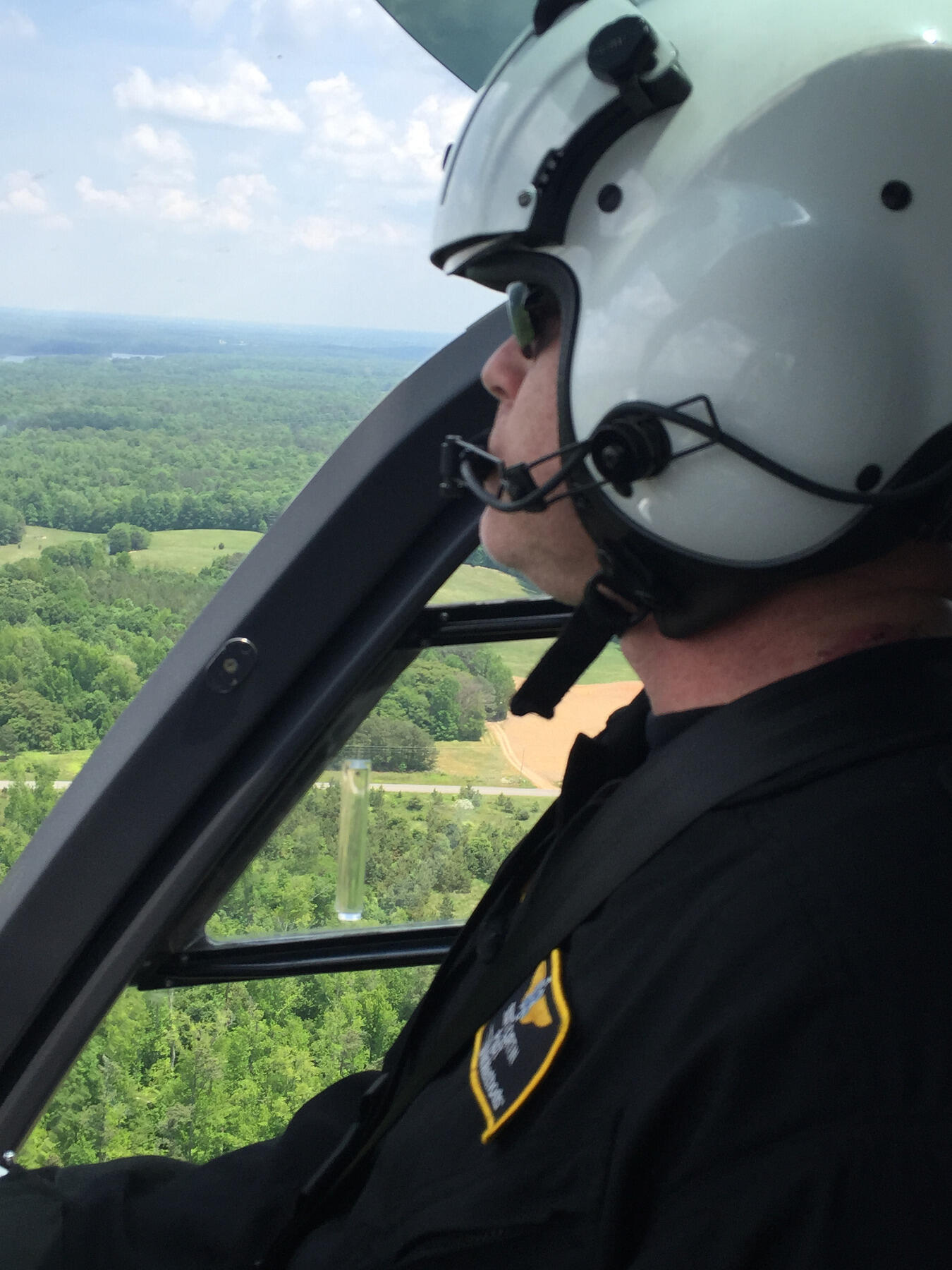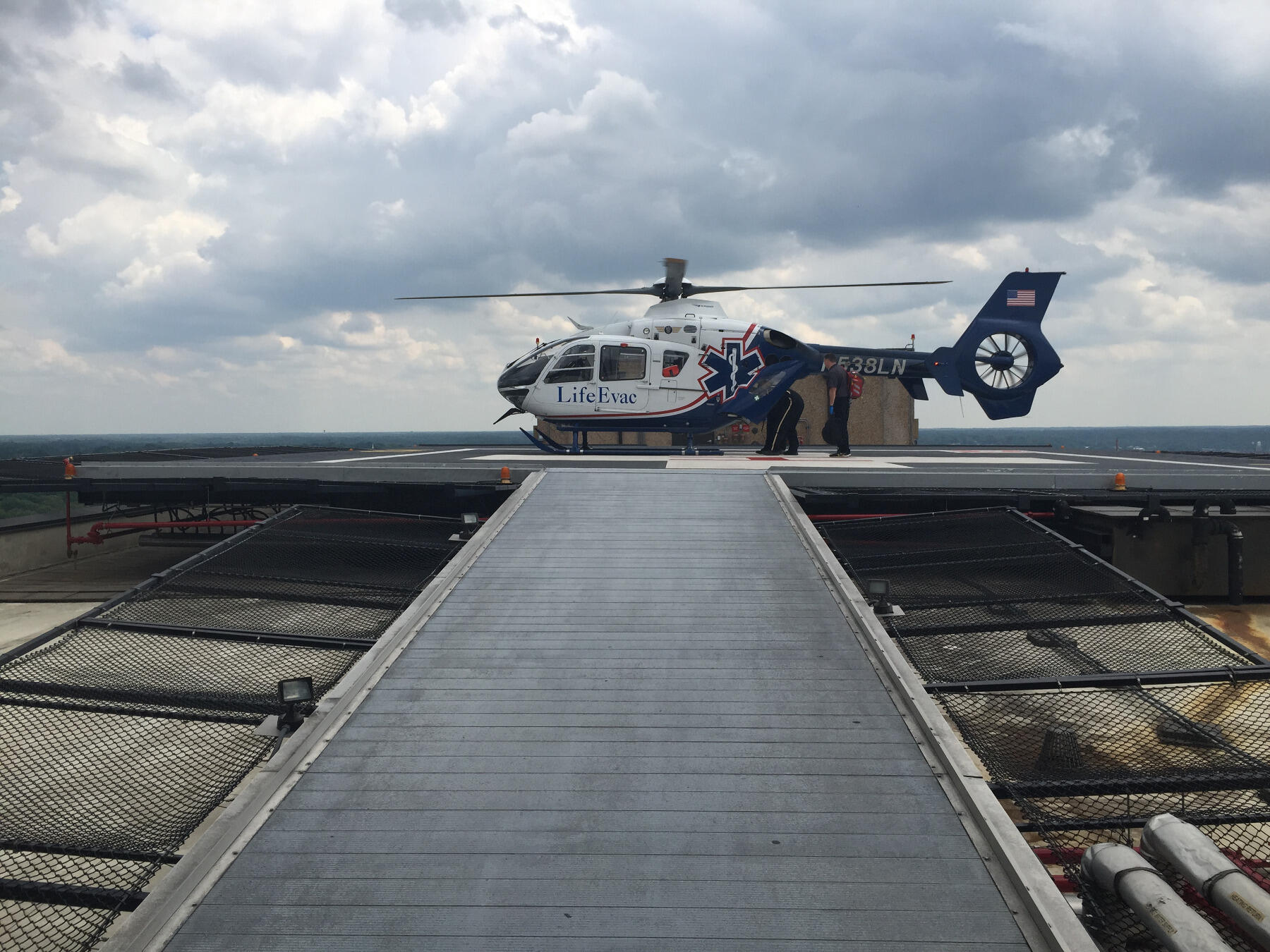
Dec. 14, 2015
Life on a VCU LifeEvac flight team
Share this story
A helicopter is a versatile flying machine. It’s a type of rotorcraft, meaning lift and thrust are controlled by the rotors, capable of vertical takeoff and landing, hovering, flying forward, backward and laterally. The functions of a helicopter make it an ideal emergency response vehicle, and much like the versatility of the machine, the flight crew from Virginia Commonwealth University LifeEvac is also quite versatile in its operations.
With the same capabilities as an emergency room and an intensive care unit, VCU LifeEvac provides the best possible care to the sickest patients while transporting them to the nearest Level I trauma center. The flight crew includes a pilot, a flight nurse and a flight paramedic that work, fly, eat, hydrate and save lives together. Pilot shifts are 12 hours and the flight paramedics and nurse shifts are 24 hours.
When delivering emergency medical care, every second counts. At any given moment, the LifeEvac crew must be ready to respond to a call as quickly and safely as possible. Preparation is key with every response. From equipment, supplies and the aircraft to each team member’s mental and physical state, all components must be 100 percent to ensure the safety and success of the mission.
One VCU LifeEvac team, comprising flight nurse Stacey Schellhammer, flight paramedic Todd Van de Bussche and pilot Scott Curtin, recently talked in-depth to us about their jobs.

Stacey Schellhammer, flight nurse, VCU Life Evac
Why is it important to have a program like VCU LifeEvac?
Flying patients allows them to get to the nearest Level I trauma center within the first 30 minutes of that golden hour.
The first reason is time-sensitive patients who are in the “golden hour” of trauma [a time period following traumatic injury, during which there is the highest likelihood that prompt medical treatment will prevent death]. If a patient has an accident and they are 45 minutes from a Level I trauma center, they may hit that golden hour before they arrive at the hospital. Flying patients allows them to get to the nearest Level I trauma center within the first 30 minutes of that golden hour. The second reason is advanced care. We can bring specialized care to patients and are able to stabilize them on scene and give care that patient might not necessarily have otherwise. This is especially the case in small, rural areas.
What are some of the unique medical features that are found on the helicopter?
In addition to our personal training we bring with us, we carry a host of medications you would not find in any ambulance. We can do invasive monitoring, we can transfer balloon pump patients and, ultimately, we provide more advanced care than you would ever find in a typical ambulance.
What is the flight nurse’s role on scene transporting the patient to the hospital?
The role of flight nurse and flight paramedic are similar. Our primary role is to quickly assess the situation and patient status, stabilize and be responsible for maintaining the stability of the patient until they receive care at the destination.
We perform a variety of transports such as the transfer of an ICU patient from one hospital to another to the complicated trauma request from an EMS provider. Our overall goal is to continue to provide critical and lifesaving interventions surrounded by exceptional compassionate patient care.
The flight crew will initially provide any lifesaving treatment to the critical burn, trauma, cardiac or neurologically impaired patient to name a few. Treatments that are immediately necessary will be completed while on scene or in the sending facility and be continued throughout transport. Other treatments that can wait may be performed once the patient is in transit to the hospital.
What do you love about this job?
It’s a huge privilege to be in a position to help someone on their worst day. It’s something we never take lightly, in terms of the care we give, in terms of how we communicate with those we are taking care of, and our knowledge base. We must always be on our game.
I understand that you sometimes hold the hands of patients while in flight. What is important about this act?
I’ve always been a hand-holder. I hold a lot of patient’s hands. I am amazed at how many times I’ve delivered high-level care and I reach down to grab a hand and they grab it back. It’s a huge part of what we do. Oftentimes you have patients that you need to provide just as much emotional support as medical support.
Todd Van de Bussche, flight paramedic, VCU LifeEvac
How long have you been a flight paramedic and how did you get here?
I have been a paramedic for 25 years. I have been a flight paramedic for 22 years and with VCU LifeEvac for eight years. I was always interested in health care. When I was old enough, which was 16, I took an EMT class, and one of the things we learned was helicopter operations. That’s when I fell in love with the helicopter.
Why is it important to have a good relationship with your crew members?
When you’re out in the field, it’s all about the patient. Since it’s just the nurse and paramedic taking care of the patients until they get to the hospital, you must be able to work together, have excellent communication and be able to put any differences aside. Even though the helicopter is equipped like an emergency department and ICU, it’s still only the two of us delivering the care.
What’s your favorite part about working for VCU Medical Center?
Working for a Level I trauma center, you are exposed to all types of cases with varying levels of severity. It’s exciting to see what VCU has to offer the community in terms of new technology, new procedures and new medicine. You only see that at a Level I trauma center.

Scott Curtin, pilot, Air Methods
What is your main priority while flying?
Safety is always the first priority when we are called. Our decision to support a request is always a team decision. Our policy is “three to go and one to say no.” I review the weather and assess the aircraft performance requirements prior to the decision to accept a flight. Once accepted, my concern is to expeditiously and safely get myself, the crew and the aircraft to the scene or hospital. It makes no sense to put the crew or aircraft at risk for a mission, so risk management is constantly reviewed throughout the flight. Once the patient is delivered to the proper level of care, our next priority is to get ourselves back into service to be ready for the next request.
What does the brief before and debrief after shifts cover? Why is this important?
Starting any shift requires a detailed look at what we as a crew can expect to do during a day. Not specific to a patient or a location, the brief allows each of us to know what to expect for weather, emergencies and communications. It also gives us a chance to assess each other with regards to flight readiness using the “I’M SAFE “model (Illness, Medication, Sleep, Alcohol, Fatigue and Exercise/Eating).
It is critical that we are aware of each other, as it can affect safety, risk and communication of the team and patient. We complete post-flight debriefing in order to review the pros and cons of any flight we execute. It serves as a crew review of our performance and, with the new procedures, as a means of tracking trends, both positive and negative, which could be corrected through training or policy.
What made you choose this career path? How did you get here?
Having been in nonflying positions for the last few years of my military career, I found a strong pull to return to the cockpit after my retirement from the U.S. Air Force, which allowed me to continue to serve my nation.
As a pilot with Air Methods, what is your favorite part about working with VCU Medical Center?
Working with VCU Medical Center is rewarding because of the combined focus to save lives. I respect the great training and work that the medical crew performs and the drive of VCU to be the best trauma center in the state.

Subscribe to the weekly VCU News email newsletter at http://newsletter.news.vcu.edu/ and receive a selection of stories, videos, photos, news clips and event listings in your inbox every Thursday.
Subscribe to VCU News
Subscribe to VCU News at newsletter.vcu.edu and receive a selection of stories, videos, photos, news clips and event listings in your inbox.






